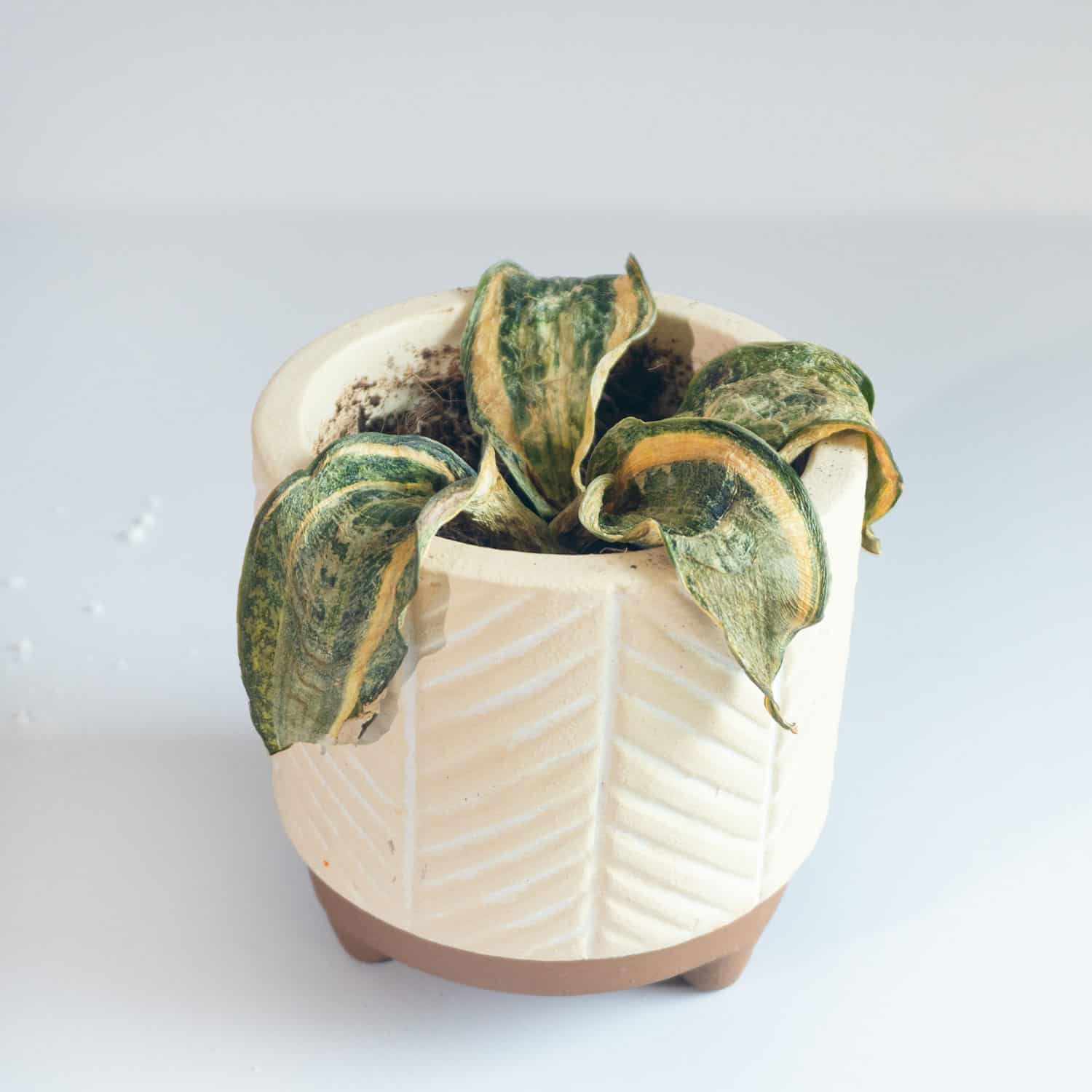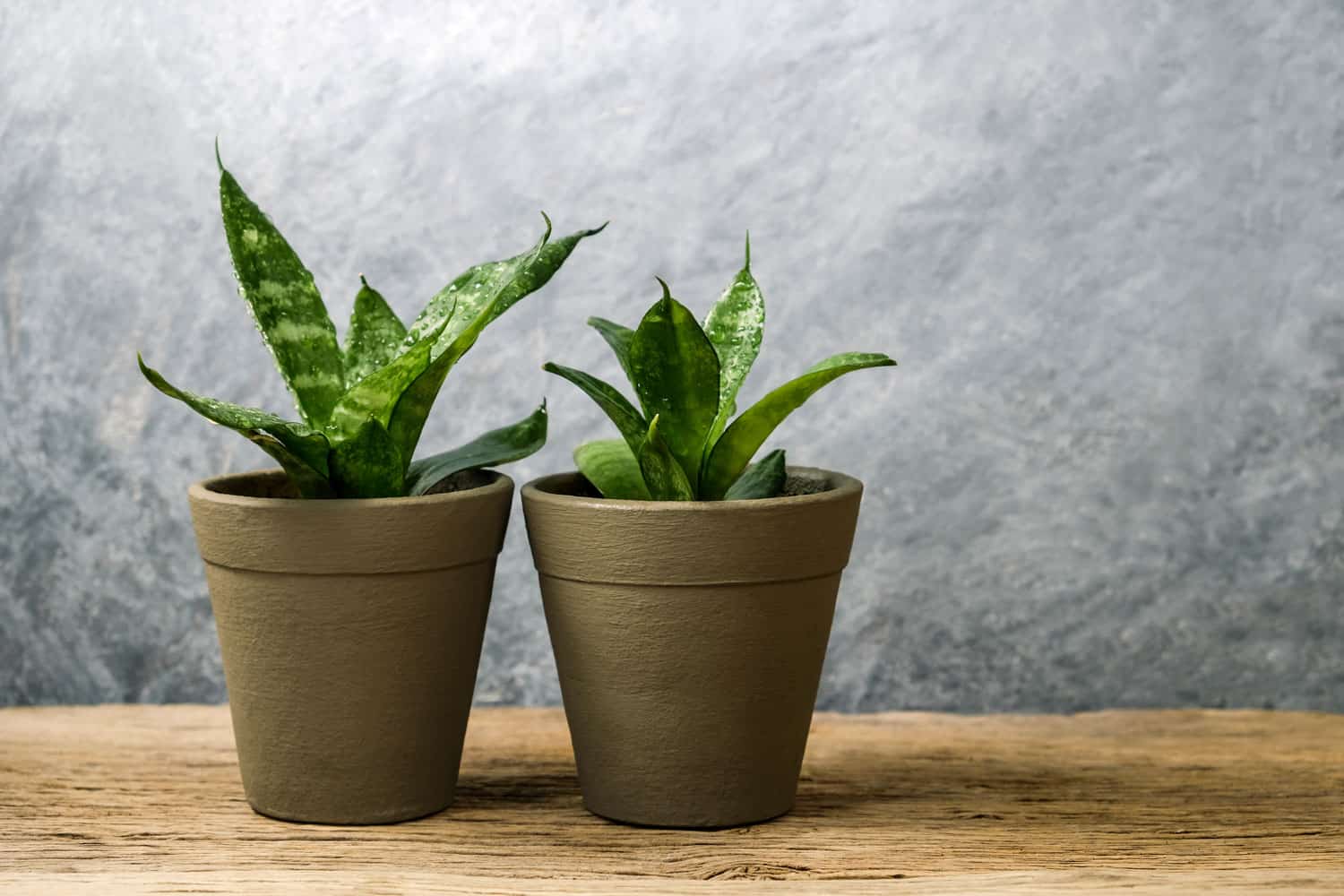Do you have a snake plant that is not looking as healthy as it used to? It can be frustrating to see your plant struggling, especially if you're unsure what's causing the problem.
One common problem with snake plants is drooping or bending leaves. Snake plant leaves are known for their robust and upright shape, so if they start to fall over or bend, it's a sign that something is wrong.
Another issue is yellow leaves, which can be a sign of overwatering or underwatering.
Brown spots or tips on leaves can also indicate a problem, as can curling or wrinkled leaves.
If you notice any of these signs, don't worry – some solutions can help.
To keep your snake plant healthy, it's essential to understand its needs. These plants prefer warm, bright light and grow well with eight to ten hours of indirect or early morning direct sunlight.
They also need well-draining soil and should be watered sparingly.
Paying attention to your plant's needs and addressing any issues promptly can help ensure that your snake plant stays healthy and vibrant for years to come.

Recognizing Your Snake Plant's Distress Signals
Your snake plant is hardy, but it can still experience distress. It's essential to recognize the signs of distress early on to save your plant from further damage.
Here are some usual distress signals to look out for:
1. Yellowing Leaves
Yellowing leaves are a common sign of trouble in snake plants. This typically occurs due to overwatering.

Snake plants prefer to dry out between waterings, so if the soil is consistently wet, the roots may rot, leading to yellow leaves.
2. Soggy Soil
Another effect of overwatering snake plants is when the soil becomes persistently wet or soggy.

This could lead to detrimental conditions as the stagnant water suffocates the roots and promotes harmful fungi or bacteria growth.
Additionally, the excess water deprives roots of essential oxygen, impeding their function and the overall health of the plant.
3. Foul Odor
An unpleasant or foul odor emanating from the soil is often a red flag.

Again, overwatering can lead to waterlogging, creating an environment where harmful fungi and bacteria thrive, leading to root decay.
This decay is what usually produces the unpleasant smell. Poor soil drainage exacerbates this issue by accumulating water around the roots, providing a breeding ground for root rot pathogens.
4. Brown Tips on Leaves
The appearance of brown tips or edges on leaves can indicate several environmental stress factors.

Underwatering can lead to dehydration, causing the leaf tips to dry and brown. Additionally, low humidity can exacerbate the dryness, as plants may lose more water through transpiration.
Exposure to direct sunlight or proximity to heat sources can also cause leaf burn, manifesting as brown tips or edges
5. Stunted Growth
Lack of new growth or stagnation in snake plants often points to inadequate lighting, among other possible factors.

Snake plants need sufficient light to carry out photosynthesis efficiently, which is crucial for their growth and vitality.
Insufficient light can lead to stunted growth as the plant struggles to generate the energy required for new cell development and overall growth.
6. Wilting or Drooping Leaves

Leaves appearing limp and drooping is a sign of distress in plants. Wilting can occur due to both overwatering and underwatering.
7. Falling Leaves

Various environmental stresses, including overwatering, underwatering, or abrupt changes in temperature or lighting conditions, can trigger leaf drops in plants.
8. Curled Leaves

Curled leaves in snake plants can occur due to a variety of factors. Aside from watering and light issues, a lack of essential nutrients or imbalanced fertilizer can lead to curled leaves.
9. Pests
The presence of pests like mealybugs or spider mites can pose significant threats to the health of plants.

These pests feed on the plant's sap, draining essential nutrients and causing damage to the leaves, weakening the plant's overall health.
Infested leaves might show discoloration, curling, or even die off, while severe infestations can stunt the plant's growth.
Beyond the physical damage, pests can also act as vectors for plant diseases, further exacerbating the problem.
10. Pot-Bound

Being pot-bound or root-bound refers to a situation where a plant's roots have grown to fill the entire container, often circling the inside of the pot due to lack of space.
This scenario can arise in snake plants when not repotted into larger containers as they grow.
Quick Solutions to Revive Your Plant
If you have identified any signs that your snake plant needs help, it's essential to act quickly to revive it. Here are some quick solutions to try:
Adjusting Watering Routine
If you suspect you have been overwatering your plant, reduce the watering frequency and allow the soil to dry out more between waterings.
If you have been underwatering your plant, increase the frequency of watering and make sure that the soil is moist but not waterlogged.
Moving to a Brighter Spot
Snake plants thrive in bright, indirect light. If your plant is not getting enough light, it may show signs of stress.
Move your plant to a brighter spot, such as a windowsill or a bright lamp. Avoid placing your plant in direct sunlight, which can scorch the leaves.
Using Insecticides
If you notice that your plant has pests such as spider mites or mealybugs, it's essential to take action quickly to prevent them from spreading.
Use an insecticide safe for snake plants, following the instructions carefully. You may also need to physically remove any visible pests with a cotton swab or soft brush.
Monitor your plant closely and adjust your care routine to keep it healthy.
Click here to buy this on Amazon.
Preventive Measures for a Healthy Snake Plant
To ensure your snake plant stays healthy, there are a few preventive measures you can take.
Regular Check-ups
Checking your snake plant regularly is crucial to maintaining its health. Inspect the leaves and soil for signs of pests, diseases, or nutrient deficiencies.
If you notice any issues, immediately prevent them from spreading.
Ideal Light Conditions
Snake plants prefer bright, indirect light. However, they can tolerate low-light conditions as well. Avoid placing your snake plant in direct sunlight, as it can scorch the leaves.
If you notice your plant leaning towards the light, rotate it every few weeks to promote even growth.
Proper Potting Mix
Using the right potting mix is essential for a healthy snake plant. A well-draining combination will prevent overwatering and root rot.
You can create your own mix using equal parts of potting soil, sand, and perlite. Alternatively, you can purchase a commercial succulent mix.
Click here to buy this on Amazon.
Final Thoughts
Your green buddy might be getting too much or too little water, or maybe it's craving some sunlight. The good news is a little attention goes a long way.
Adjusting your watering habits, moving it to a brighter spot, and watching for bugs can turn things around. Regular check-ups, a good draining soil mix, and keeping it out of direct sun will keep it happy in the long run.
It's all about understanding what your snake plant needs and reacting to its distress signals before they turn into plant SOS!


